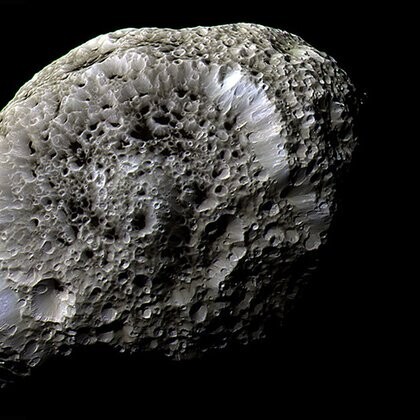NASA · @nasa
65293 followers · 7274 posts · Server social.beachcom.orgMoons! There are hundreds of them in the solar system https://solarsystem.nasa.gov/moons/
#NASASolarSystem
NASA · @nasa
64705 followers · 7240 posts · Server social.beachcom.orgUsing data from @NASAMars' InSight lander, scientists have made the most precise measurements ever of the Red Planet’s rotation. https://go.nasa.gov/3DIsWGa
How? Giant radio antennas on Earth! 🌏📡🔴 Specifically, @NASASCaN's Deep Space Network.
[Video embedded in original tweet]
#NASASolarSystem
NASA · @nasa
64683 followers · 7229 posts · Server social.beachcom.orgNASA · @nasa
75141 followers · 7237 posts · Server social.beachcom.orgMore about Io and Juno's upcoming passes by this intriguing world, which will be even closer:
[Video embedded in original tweet]
#NASASolarSystem
NASA · @nasa
75141 followers · 7237 posts · Server social.beachcom.orgFresh from Jupiter, we have new views of its active moon Io, thanks to the #JunoMission. JunoCam even caught a glimpse of a volcanic plume! This is Prometheus, the "Old Faithful of Io." More images: https://www.missionjuno.swri.edu/junocam/processing?source=public
#NASASolarSystem
NASA · @nasa
74888 followers · 7182 posts · Server social.beachcom.orgWhat's Up in August? Saturn reaches opposition, meaning it's at its biggest and brightest for the year. The "shooting stars" of the Perseid meteors are a must-see overnight on August 12-13. And August brings two full moons. https://solarsystem.nasa.gov/skywatching/home/
[Video embedded in original tweet]
#NASASolarSystem
NASA · @nasa
74274 followers · 7131 posts · Server social.beachcom.orgHow do planets get their names? Aside from Earth, planets in our solar system were named after ancient gods. Today, the job of naming falls to the International Astronomical Union, the internationally recognized authority for naming celestial bodies. https://solarsystem.nasa.gov/planets/
[Video embedded in original tweet]
#NASASolarSystem
NASA · @nasa
74206 followers · 7115 posts · Server social.beachcom.orgMercury is the closest planet to our Sun – yet ice may lurk in its shadowed polar craters. New NASA research is shedding more light on the terrain near the planet's south pole.
#NASASolarSystem
NASA · @nasa
74019 followers · 7100 posts · Server social.beachcom.orgWhat a fascinating time, when we can not only explore our own solar system, but glimpse the workings of other planetary systems – across both time and space – with @NASAWebb and @NASAExoplanets
#NASASolarSystem
NASA · @nasa
73688 followers · 7096 posts · Server social.beachcom.orgOur daredevil spacecraft is almost home! On Sept. 24, after a seven-year-long journey #ToBennuAndBack, OSIRIS-REx will return to Earth with a sample of asteroid Bennu.
Mission updates: https://blogs.nasa.gov/osiris-rex/
[Video embedded in original tweet]
#NASASolarSystem
#ToBennuAndBack #NASASolarSystem
NASA · @nasa
73537 followers · 7076 posts · Server social.beachcom.orgWith less than 100 days to go before launch, NASA’s Psyche spacecraft is undergoing final preparations at Cape Canaveral. 🚀 The #MissionToPsyche will journey to a place we've never visited before – a metal-rich asteroid. https://youtu.be/y__vwRQ3PVg
#NASASolarSystem
#MissionToPsyche #NASASolarSystem
NASA · @nasa
73537 followers · 7075 posts · Server social.beachcom.orgNASA · @nasa
73393 followers · 7053 posts · Server social.beachcom.orgJuly is a great month to see the center of the Milky Way under clear, dark skies. 🌌 This long exposure image reveals green airglow and details in the Milky Way not visible to the naked eye. http://solarsystem.nasa.gov/skywatching/
#NASASolarSystem
NASA · @nasa
72936 followers · 7066 posts · Server social.beachcom.orgDue to a postponed launch that made its asteroid targets inaccessible, NASA has decided to conclude the Janus mission. Janus was part of our SIMPLEx program of low-cost, high risk science missions ride-sharing with primary missions. https://go.nasa.gov/3OaxxHg
#NASASolarSystem
NASA · @nasa
72842 followers · 7062 posts · Server social.beachcom.orgNASA · @nasa
69091 followers · 7081 posts · Server social.beachcom.orgNASA · @nasa
69057 followers · 7074 posts · Server social.beachcom.orgCongratulations to the NANOGrav team! We're excited that our #JunoMission to Jupiter played a role in this historic discovery by providing key data about the solar system's barycenter. https://spaceplace.nasa.gov/barycenter/en/
#NASASolarSystem
NASA · @nasa
68685 followers · 7022 posts · Server social.beachcom.orgToday our #JunoMission completed its 52nd close pass by Jupiter! Earlier this year, it captured this view of storms and hazes on the giant planet. https://www.missionjuno.swri.edu/news/nasa-s-juno-mission-observes-high-altitude-hazes-in-jupiter
📸 processed by Björn Jónsson
#NASASolarSystem
NASA · @nasa
68626 followers · 7013 posts · Server social.beachcom.orgAre there earthquakes on other planets? Yes – but we don’t call them earthquakes. Instead, “moonquakes” and “marsquakes” are shaking things up in space https://go.nasa.gov/3N68hP1
#NASASolarSystem
NASA · @nasa
68577 followers · 7001 posts · Server social.beachcom.orgVenus and the Moon setting in hazy skies over Horseshoe Springs, Utah. Mars is also visible, just to the upper left of Venus. The trio will appear even closer together in the western sky tonight. More stargazing tips: https://solarsystem.nasa.gov/skywatching/whats-up/
#NASASolarSystem










